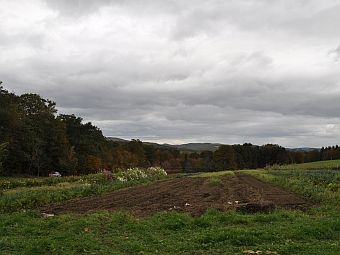 I’m Charlie Nardozzi and this is the Vermont Garden Journal. There are many great anniversaries in the garden. The date your first rose opens and the date of your first ripe tomato. But this week we’re remembering a different, more somber anniversary: the date tropical storm Irene wrecked havoc on Vermont. The destruction has been repaired in many areas, but how are the gardens growing? Many home owners lost gardens, lawns, trees and shrubs to the flooding devastation.
I’m Charlie Nardozzi and this is the Vermont Garden Journal. There are many great anniversaries in the garden. The date your first rose opens and the date of your first ripe tomato. But this week we’re remembering a different, more somber anniversary: the date tropical storm Irene wrecked havoc on Vermont. The destruction has been repaired in many areas, but how are the gardens growing? Many home owners lost gardens, lawns, trees and shrubs to the flooding devastation.
While I don’t have a full assessment of the garden recovery, I know a lot has been done to bring back the greenery in many areas. Often homeowners had to start all over bringing in fill, topsoil and installing new plantings. In many areas the flooding changed the face of the landscape, opening up spots to full sun where trees were washed away. It has forced many to rethink the location of their garden and what they are growing. Many communities got support to fix roads, bridges, and buildings. And there were some groups that focused on helping the gardens.
The Vermont Community Garden Network, in conjunction with the Episcopal Diocese of Vermont and the Vermont Community Foundation, set up a grant system to help many communities reestablish their gardens. Two rounds of grants were awarded to school and community gardens across the state in the most flood damaged areas.
Recognizing that residents utilize the community gardens to supplement their yearly food supply, these grants were essential in helping purchase of new soil, materials to build fences, beds and signs, and money to start new community and school gardens. Gardens in flood ravaged towns such as Chester, Hardwick, Montpelier, Quechee, White River Junction, and Woodstock received up to $1,000 each to rebuild their gardens.
For this week’s tip, consider planting deciduous trees and shrubs this fall. The roots will continue to grow until the soil temperatures reach 40F and by selecting tough natives such as Amelanchier and pagoda dogwood, your trees should survive the winter in tact.
Next week on the Vermont Garden Journal, I’ll be talking about powdery mildew disease. For now, I’ll be seeing you in the garden!